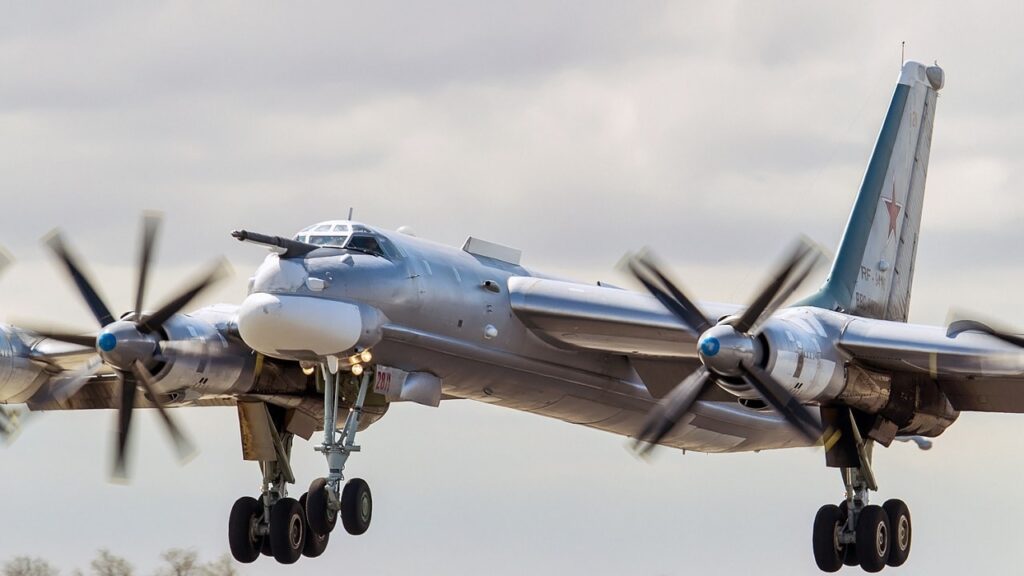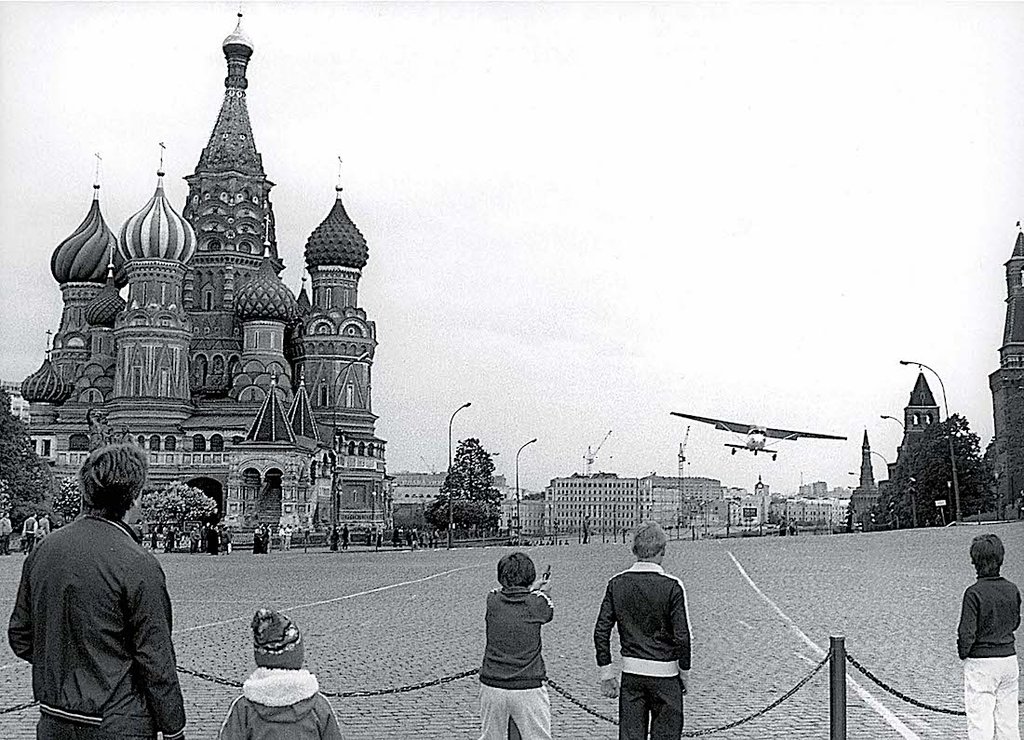During the Ukrainian drone attack on Sunday on Russian airfields, several Tu-95 Bear strategic bombers were destroyed or damaged. These losses were keenly felt, although the Tu-95 is a Cold War-era bomber from the 1950s.
The production of the Tu-95 and the Tu-22M ended after the 1991 collapse of the USSR, meaning that any of them lost on Sunday can’t be replaced. Russia also has another type of strategic nuclear-capable bomber, the supersonic Tu-160.
According to military analyst Oleksandr Kovalenko, this loss is a devastating one for Moscow.
“Today, Russia lost over 40 aircraft, either destroyed or damaged, including valuable strategic bombers of various types. The Ukrainian strikes hit four military airfields, including the Olenya airbase near Murmansk and the Belaya airbase in Irkutsk Oblast,” he said.
“The unique feature of this operation was that the drones didn’t fly from Ukraine; instead, they were transported by truck closer to the targets and launched from a minimal distance. They were controlled by artificial intelligence, which selected targets autonomously.”
The Tu-95 Bear
The Tu-95 is the oldest of the three aircraft, a Soviet-era plane that first flew in 1952. It was initially used to carry nuclear bombs but has since evolved to launch cruise missiles. It is still in service today because the Russian Aerospace Forces use it as a missile truck.
Each aircraft can carry 16 cruise missiles – either the Kh-55/Kh-555 or the newer Kh-101 and Kh-102 air-launched cruise missiles. Just like the old American B-52, the Bear remains an integral part of Russia’s defenses.
Before the drone attack, Russia was believed to have 55 Tu-95s still operational. It was confirmed on video that at least five were destroyed. However, Ukrainian officials are claiming that more than a dozen were damaged. If that is true, then it is a devastating loss that can’t be replaced.
Related: Ukraine strikes Russia’s strategic bomber fleet in attack worthy of special operations history
Replacement isn’t an option
Clearing skies over Russia’s Belaya and Olenya airbases are allowing EO satellites to reveal the burnt out wrecks of numerous Russian bombers.
— OSINTtechnical (@Osinttechnical) June 4, 2025
Ukraine’s weekend FPV drone raid destroyed at least 7 bombers at Belaya (3x Tu-95, 4x Tu-22) and 3 bombers at Olenya (3x Tu-95). pic.twitter.com/GRJjomi4nD
Tu-95 bombers and other similar Russian strategic aircraft, such as the Tu-22M3 Backfire, are impossible to replace due to the closure of their production lines following the collapse of the USSR.
This means that any losses of existing Tu-95s and other bombers cannot be immediately replaced with new aircraft of the same type. The old Tu-95 Bears are expected to stay in service until at least 2040. However, due to delays in the next bomber, that time may be extended even further.
The Russians were supposed to have the PAK DA, the next-generation bomber, online by now, but that is still in development and isn’t close to being fielded. Therefore, they are currently having to rely on producing the Tu-160 Blackjack bombers that are made at a glacial pace.
The Tu-160 is Russia’s more modern strategic bomber, entering service in 1987. To this day, it remains the largest operational bomber in the world.
It can carry a total of 12 Kh-55 missiles and up to 24 Kh-15s.
Fewer than 20 Tu-160s are in service, and Russia has just begun production of its modernized version, equipped with new engines and avionics.
Russia lost a significant part of its heavy bomber fleet in the attack, “with no immediate ability to replace it,” said Douglas Barrie of the International Institute of Strategic Studies, noting that Moscow’s announced plan to develop the next-generation strategic PAK DA bomber is still in its early phase.
“Ironically, this might give impetus to that program because if you want to keep your bomber fleet up to size, then you’re going to have to do something at some point,” he said.
After Ukraine attacked Russian air bases close to the border and the fighting, Russia dispersed their bombers that had been making cruise missile attacks to bases far from the fighting, in the Arctic and as far as Siberia (Irkutsk), where they were thought to be safe.
However, the Ukrainian SBU Security Service was able to accomplish an unprecedented success by launching this attack close to the Russian air bases. Whether they destroyed 41 aircraft as claimed or not, this was a huge black eye for the Russian FSB and their national defense mechanisms.
Feature Image: A Tupolev Tu-95MS bomber. (Russian Air Force)
This article by Steven Balestrieri was originally published by 19FortyFive.com.
Read more from Sandboxx News
- Keeping it weird – The most bizarre features on military firearms
- Winter woes and vehicle acrobatics in the Big Army
- Ukraine strikes Russia’s strategic bomber fleet in attack worthy of special operations history
- Spy satellites aren’t nearly as all-seeing as you think
- The Great Gatorade Battle of Helmand Province










